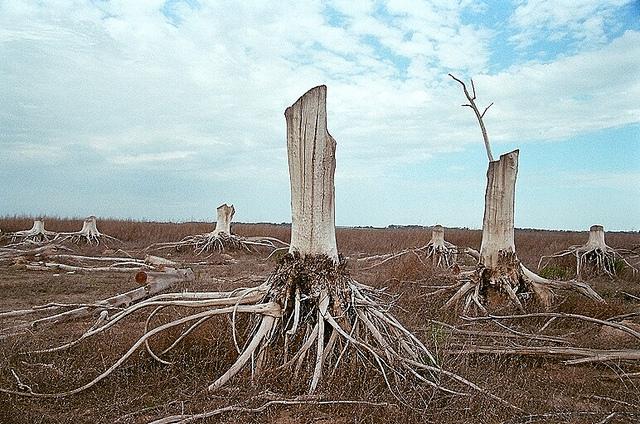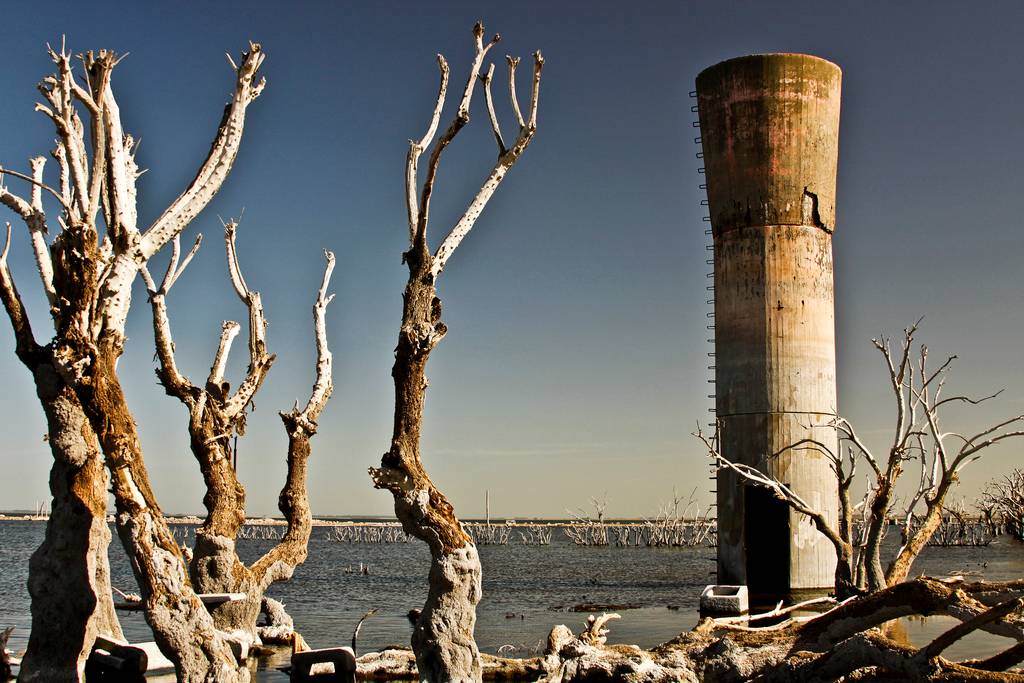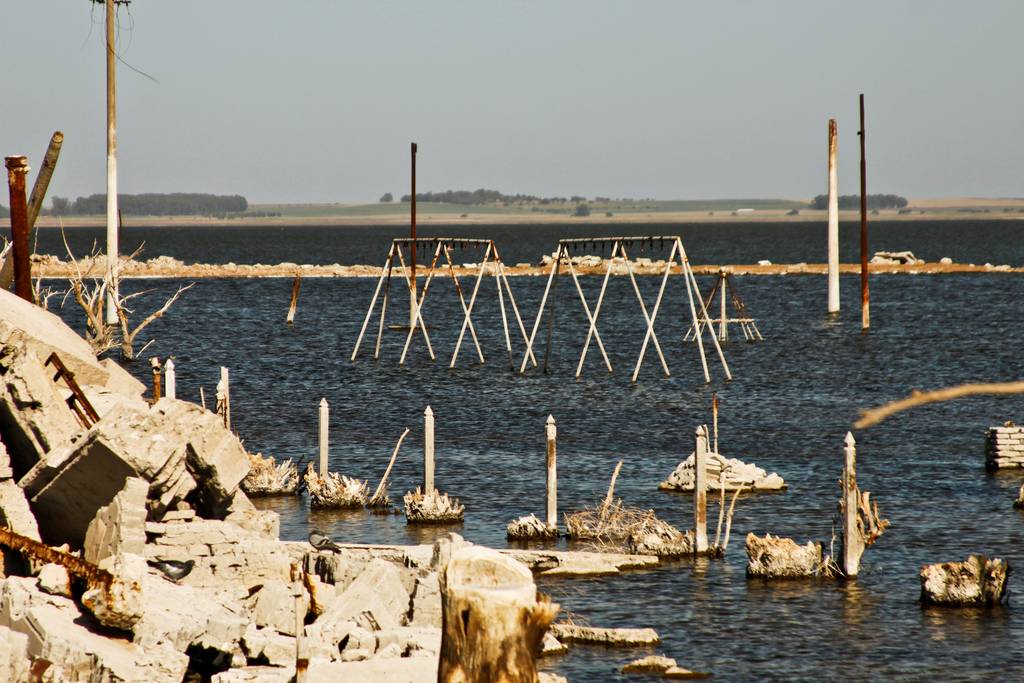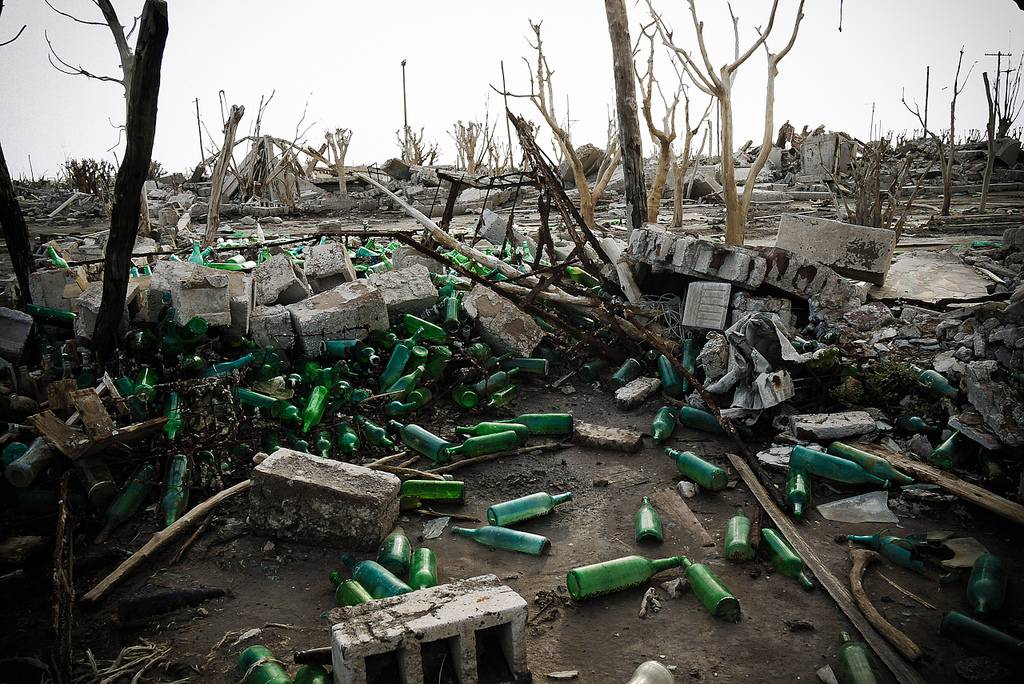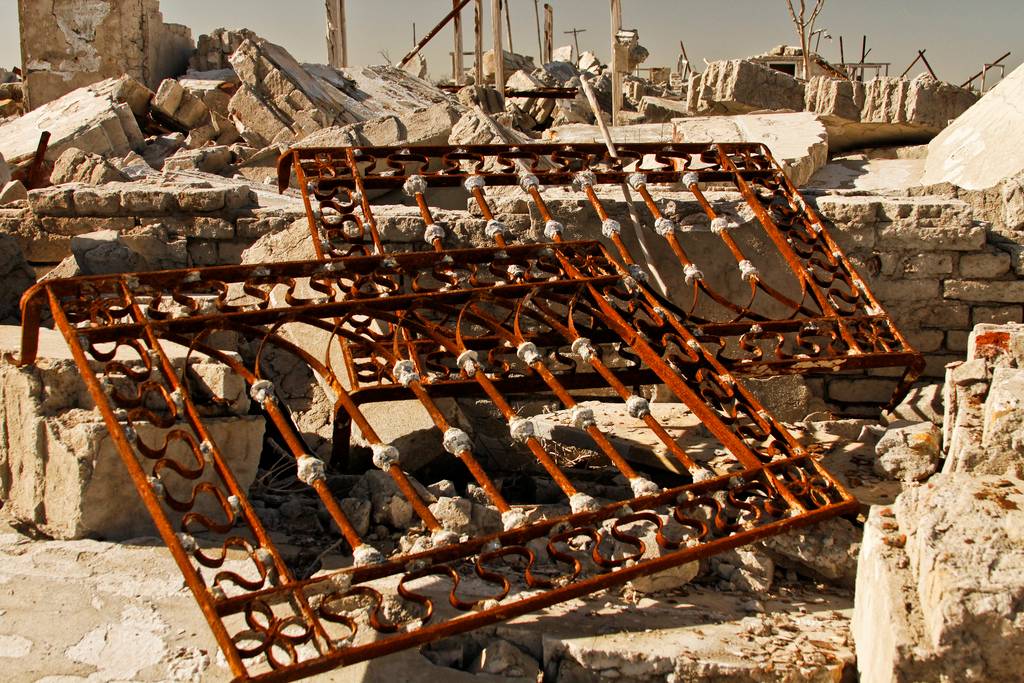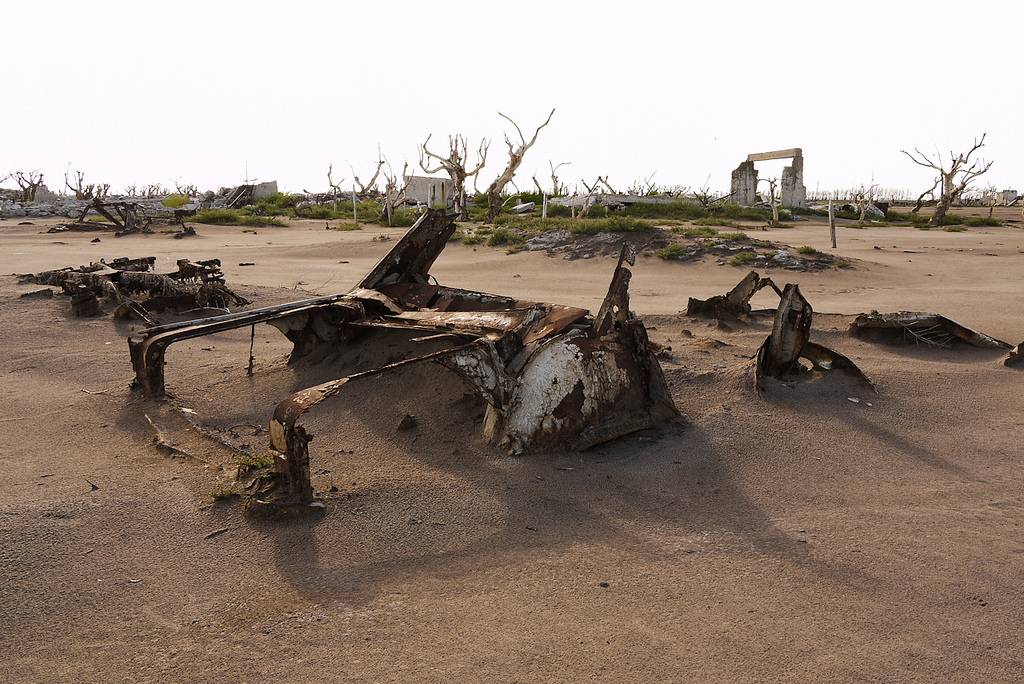30 June 2016
Villa Epecuén: Argentina’s Pompeii Revealed
Once, people would flock to the small town of Villa Epecuén in Argentina’s Buenos Aires Province to take advantage of the saline, healing waters of its lake. Decades of tourism was wiped away in November 1985. The rains were unusually heavy and the lake burst its banks. The entire town of more than 100 blocks disappeared under ten meters of water.
It was, to say the least, unexpected. The unusual weather patterns caused the waters of the lake to form a seiche, otherwise known as a standing wave. The wave shattered the nearby dam and directly afterwards the dyke which protected the town fell. The town was doomed.
The town's old slaughterhouse is still a formidable looking structure. You can see why Epecuén is often called Argentina’s Pompeii even though that is something of a misnomer. Yet it remained submerged for 25 years. Only in the last two years have the waters receded allowing the town to emerge from the depths. Now, people can walk through the streets of the town once again.
Image Credit Flickr User OpenMinder
Image Credit Flickr User JoseCarizzo
Image Credit Flickr User drPabloGonzalez
As the waters have receded they have left behind a residue of salt, caked in its crystal form to every surface. It gives the town an ethereal, otherworldly look. Roots of trees long dead seem to writhe in to the earth. It is an apocalyptic scene.
Image Credit Flickr User OpenMinder
Image Credit Flickr User Fede Salvo
Before the cataclysm, Villa Epecuén was a thriving tourist destination, attracting visitors from Argentina and abroad. Its waters, ten times saltier than the sea, attracted tens of thousands of visitors each year. It was particularly popular with Buenos Aires’ Jewish community, which wistfully substituted the South American lake for the Dead Sea.
Image Credit Flickr User Fede Salvo
Image Credit Flicr User JoseCarizzo
The population of over 1500 were forced to relocate and leave their precious town behind them. Even though they could never have envisioned that Villa Epecuén would reappear they have not exactly returned in their droves. In fact the town boasts a single resident, octogenarian Pablo Novak (pictured above). He had spent his youth, fallen in love and started a family in Villa Epecuén. If it is a sense of romantic nostalgia which has drawn him back then one can only wish him good fortune.
Image Credit Flickr User OpenMinder
Image Credit Flickr User FedeSalvo
The tourists are now returning. Old Don Novak greets them and often accompanies them around the ruins. Villa Epecuén may be compared to Pompeii but that’s one thing you can never get there: an eye witness account from a survivor.
Image Credit Flickr User JoseCarizzo
First Image Credit
It was, to say the least, unexpected. The unusual weather patterns caused the waters of the lake to form a seiche, otherwise known as a standing wave. The wave shattered the nearby dam and directly afterwards the dyke which protected the town fell. The town was doomed.
The town's old slaughterhouse is still a formidable looking structure. You can see why Epecuén is often called Argentina’s Pompeii even though that is something of a misnomer. Yet it remained submerged for 25 years. Only in the last two years have the waters receded allowing the town to emerge from the depths. Now, people can walk through the streets of the town once again.
Image Credit Flickr User OpenMinder
Image Credit Flickr User JoseCarizzo
Image Credit Flickr User drPabloGonzalez
As the waters have receded they have left behind a residue of salt, caked in its crystal form to every surface. It gives the town an ethereal, otherworldly look. Roots of trees long dead seem to writhe in to the earth. It is an apocalyptic scene.
Image Credit Flickr User OpenMinder
Image Credit Flickr User Fede Salvo
Before the cataclysm, Villa Epecuén was a thriving tourist destination, attracting visitors from Argentina and abroad. Its waters, ten times saltier than the sea, attracted tens of thousands of visitors each year. It was particularly popular with Buenos Aires’ Jewish community, which wistfully substituted the South American lake for the Dead Sea.
Image Credit Flickr User Fede Salvo
Image Credit Flicr User JoseCarizzo
The population of over 1500 were forced to relocate and leave their precious town behind them. Even though they could never have envisioned that Villa Epecuén would reappear they have not exactly returned in their droves. In fact the town boasts a single resident, octogenarian Pablo Novak (pictured above). He had spent his youth, fallen in love and started a family in Villa Epecuén. If it is a sense of romantic nostalgia which has drawn him back then one can only wish him good fortune.
Image Credit Flickr User OpenMinder
Image Credit Flickr User FedeSalvo
The tourists are now returning. Old Don Novak greets them and often accompanies them around the ruins. Villa Epecuén may be compared to Pompeii but that’s one thing you can never get there: an eye witness account from a survivor.
Image Credit Flickr User JoseCarizzo
First Image Credit





